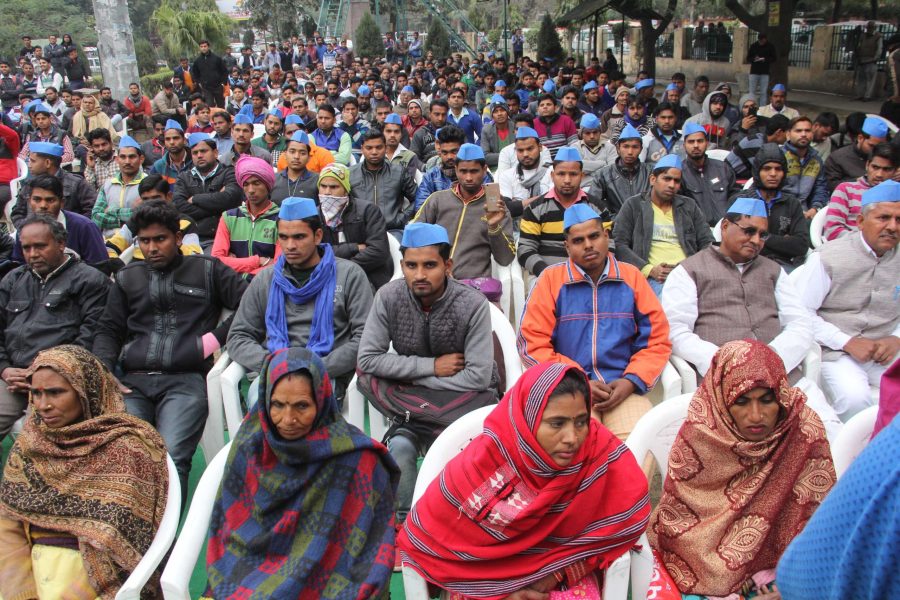
UP phase II polls: Will Muslims, Dalits unite to choose the next govt?

The second phase of polling in Uttar Pradesh on Monday (February 14) will be a test for Samajwadi Party’s ability to unite Dalit and Muslim voters while the BJP, keen on retaining power, would believe polarisation of the two communities would benefit it get back to power once again.
A total of 55 seats in nine districts of western Uttar Pradesh are up for grabs in this region of the state where high-pitch campaigning ended on Saturday (February 12). The nine districts that will go to polls this time are Saharanpur, Moradabad, Bareilly, Rampur, Bijnor, Amroha (J.P. Nagar), Sambhal (Bhim Nagar), Budaun and Shahjahanpur district.
Yadav stronghold
While Akhilesh Yadav’s party could not win the elections in 2017, this region with 55 seats has always been the Yadav family’s fiefdom. In the last polls, the party won 27 seats here though the ‘Modi wave’ was prevailing everywhere. The BJP, on the other hand, could manage to win only 11 seats while Mayawati’s BSP won 13 seats.
Dalit voters hold the key to some 20-odd assembly seats here while Muslim voters have a decisive say in 25 seats.
Saharanpur, Moradabad, Sambhal, Bijnor and Rampur are Muslim strongholds while nine constituencies are reserved for Scheduled Castes.
Also read: Don’t choose ‘medieval bigotry’: Kerala leaders respond to Yogi’s comments
Four ministers in the Yogi Adityanath cabinet — Mahesh Chandra Gupta, Gulab Devi, Suresh Khanna and Baldev Singh Aulakh – will test their luck this time. Senior SP leader Azam Khan, presently in jail, is contesting from Rampur. Congress has fielded Nawab Kazim Ali Khan against Azam Khan.
Other prominent candidates are Supriya Aron of Samajwadi Party from Bareilly Cantonment, Keerat Singh Gurjar from Gangoh and BJP’s Devendra Nagpal from Naugawan seat.
The Muzaffarnagar factor
Muzaffarnagar, which witnessed communal violence in 2013, is close to this region of western UP. The riots had then killed about 60 people but helped BJP make big gains in the region. Polarisation, along with a strong Modi wave, helped the saffron party capture power in 2017. Modi effect appears to have faded this time, but top leaders of BJP are raking up the Muzaffarnagar riots issue, promising a state free of communal violence.
Some constituencies here were witness to farmers protest during the anti-farm laws movement last year and could spell trouble for BJP this election. A section of farmers is unhappy with the Adityanath administration for failing to hike the FRP for sugarcane and non-payment of sugarcane arrears by mill owners.
Voting statistics
On Monday, 586 aspirants will test their luck. The seats which are going to polls are Behat, Nakur, Saharanpur Nagar, Saharanpur, Thakurdwara, Moradabad Rural, Moradabad Nagar, Kundarki, Bilari, Chandausi (SC), Asmoli, Sambhal, Suar, Chamraua, Bilaspur, Rampur, Milak (SC), Deoband, Rampur Maniharan (SC), Gangoh, Najibabad, Nagina (SC), Barhapur, Dhampur, Nehtaur (SC), Bijnor, Chandpur, Bithari Chainpur, Bareilly, Bareilly Cantt., Noorpur, Kanth, Dhanaura (SC), Naugawan Sadat, Amroha, Hasanpur, Gunnaur, Bisauli (SC), Sahaswan, Bilsi, Badaun, Shekhupur, Dataganj, Baheri, Meerganj, Bhojipura, Nawabganj, Faridpur (SC), Aonla, Katra, Jalalabad, Tilhar, Powayan (SC), Shahjahanpur and Dadraul.
Also read: In UP, BJP hopes lie in splintering of Dalit and Muslim votes
As many as 2,01,42,441 voters are eligible to exercise their franchise in the second phase of polls. Of them, 1,07,61,476 are male voters and 93,79,704 are female and 1,261 third gender voters.

